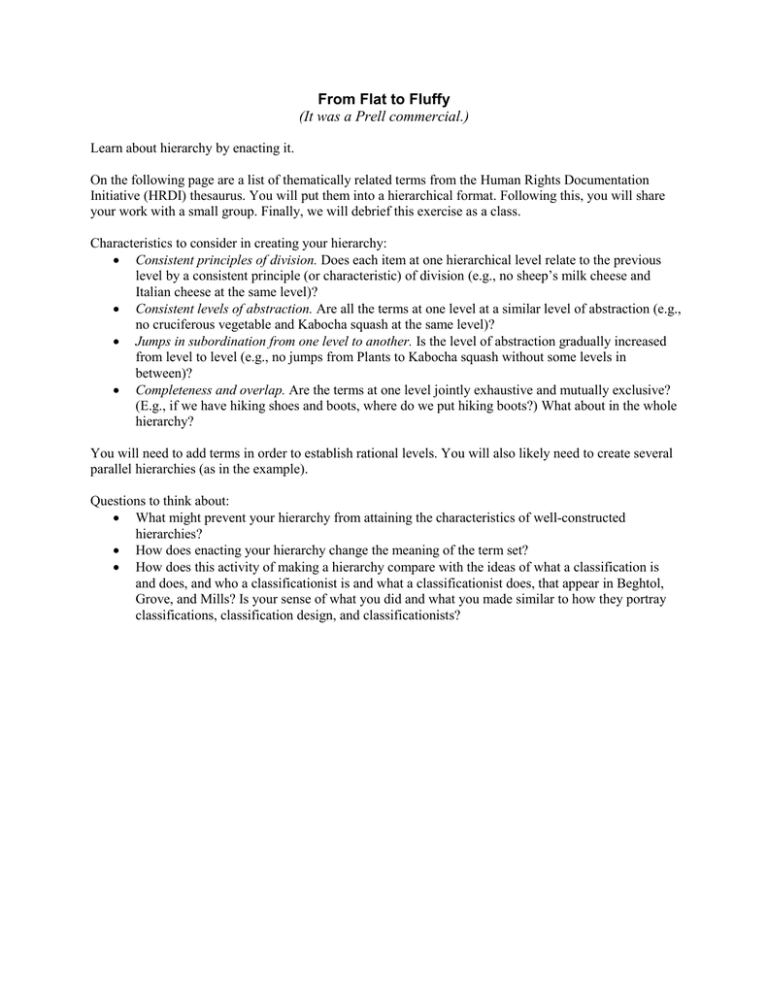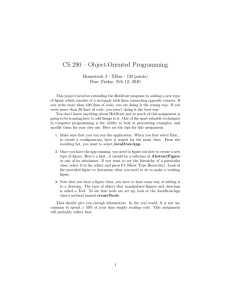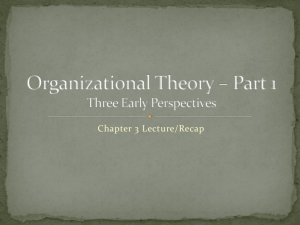
From Flat to Fluffy
(It was a Prell commercial.)
Learn about hierarchy by enacting it.
On the following page are a list of thematically related terms from the Human Rights Documentation
Initiative (HRDI) thesaurus. You will put them into a hierarchical format. Following this, you will share
your work with a small group. Finally, we will debrief this exercise as a class.
Characteristics to consider in creating your hierarchy:
Consistent principles of division. Does each item at one hierarchical level relate to the previous
level by a consistent principle (or characteristic) of division (e.g., no sheep’s milk cheese and
Italian cheese at the same level)?
Consistent levels of abstraction. Are all the terms at one level at a similar level of abstraction (e.g.,
no cruciferous vegetable and Kabocha squash at the same level)?
Jumps in subordination from one level to another. Is the level of abstraction gradually increased
from level to level (e.g., no jumps from Plants to Kabocha squash without some levels in
between)?
Completeness and overlap. Are the terms at one level jointly exhaustive and mutually exclusive?
(E.g., if we have hiking shoes and boots, where do we put hiking boots?) What about in the whole
hierarchy?
You will need to add terms in order to establish rational levels. You will also likely need to create several
parallel hierarchies (as in the example).
Questions to think about:
What might prevent your hierarchy from attaining the characteristics of well-constructed
hierarchies?
How does enacting your hierarchy change the meaning of the term set?
How does this activity of making a hierarchy compare with the ideas of what a classification is
and does, and who a classificationist is and what a classificationist does, that appear in Beghtol,
Grove, and Mills? Is your sense of what you did and what you made similar to how they portray
classifications, classification design, and classificationists?
Economic and labor rights
adequate housing
barter
child labor
corporate social responsibility
digital divide
divestment
domestic/household workers
drug trafficking
economic policy
fair trade
forced labor
free trade
globalization
hiring discrimination
human trafficking
informal economy
labor unions
labor rights
microfinance
nationalization of businesses and property
poverty
privatization of natural resources
sex workers
sexual slavery
street children
sweatshops
trade policies
unemployment




